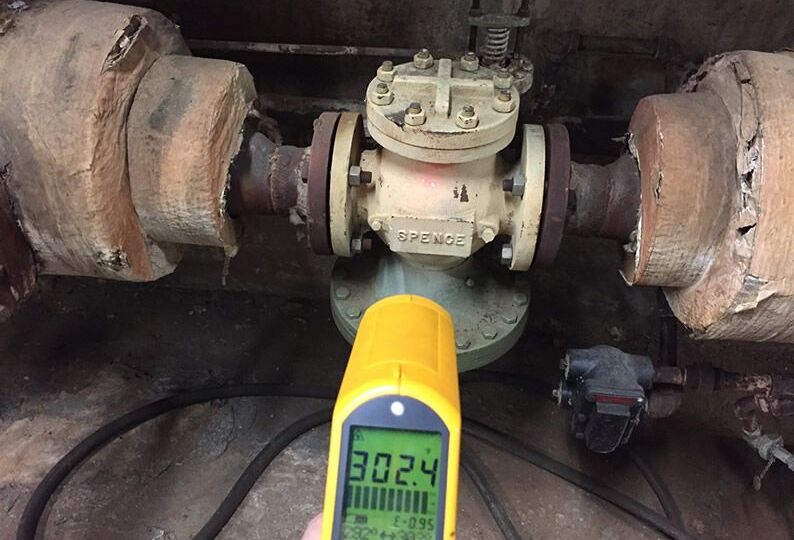When it comes to reusable insulation, there are three major benefits: energy savings, cooling, and worker safety. While energy savings are often top of mind when considering investing in insulation blankets, the mitigating effects insulation can have on hot industrial elements can be just as impactful.
“There’s hot surfaces on steam or extruder lines, where the operators are working right in that area, and they have to walk past a surface that can be 220 degrees or 370 degrees.”
Many facilities, from food processing plants to universities, have extremely hot components out in the open, posing a direct safety hazard to those who work around them.
“Typically, it’s an exposure hazard,” said Peter Kessell, Outside Sales Engineer at Calpacific Equipment Company. “There’s hot surfaces on steam or extruder lines, where the operators are working right in that area, and they have to walk past a surface that can be 220 degrees or 370 degrees.”
Exposure to such elements opens the company up to significant liability concerns. Should a worker trip and come in contact with an exposed component, they can suffer significant burns. A common example of this is a globe valve, often found on large steam mains.
“A lot of times, they’re right at upper-body level,” Kessell said. “You have enough space to get by, but you’re still moving past a surface that’s 220 degrees Fahrenheit.”
Such high temperatures out in the open leads to the second concern insulation can address: cooling. In a confined space, hot elements can heat a room to uncomfortable levels that affect worker safety. This can often be found in mechanical and boiler rooms at universities and hospitals, places without the space to spread out these hot components.
“At a local university, their mechanical room could get up to 120 degrees [Fahrenheit],” recalled Kessell. “After the insulation was installed, there was about a 20-degree [Fahrenheit] drop, very noticeable.”
Reusable insulation blankets, like those manufactured by Shannon Global Energy Solutions, are one of the best ways to address these concerns. Unusually shaped components are best insulated with a custom blanket, to ensure a perfect fit.
“The Shannon insulation blankets are a very good fit for the oddball stuff, for globe valves, for condensate return systems, for the stuff you need a custom fit,” said Kessell.
Without a custom fit, facility managers can unknowingly cause CUI, or corrosion under insulation. This kind of corrosion, say experts, occurs where systems are frequently exposed to changing temperatures and high humidity and when insulation gets wet, thus accelerating corrosion. CUI can be difficult to find and diagnose without taking a sample. Preventing CUI requires the correct insulating materials and an adherence to certain tolerances, fibers and design specifications. By taking these things into account, it’s possible to insulate any problem area, component or geometry. A properly fitted reusable blanket also saves a company on replacing insulation during maintenance; in fact, the one-time cost to remove and replace insulation that is not a reusable design would typically pay for the design and installation of a reusable insultation system.

